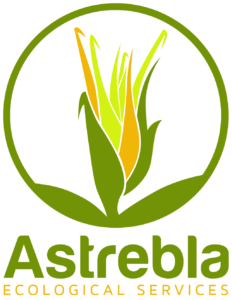Another species on our search radar in October 2021 (see previous post about Calotis glabrescens) was the twining vine Vincetoxicum forsteri (until 2018 known as Tylophora linearis), which is listed as endangered under the EPBC Act (Cth) and the Nature Conservation Act (Qld). This very cryptic twiner of the Apocynaceae family was first described by Paul Forster of the Queensland Herbarium in 1992 from collections made in south-east Qld only four times, in 1913, 1914, 1960 and 1969 (Forster, Binns & Robertson, 2004). A small number of populations were discovered in central NSW around 2003 (Forster, Binns & Robertson, 2004), and the species is now relatively well-known in that state (where it has been collected extensively by the outstanding RPS ecologist Mark Aitkens). But until recently V. forsteri had remained elusive in Queensland since 1968.
However, a GHD survey in 2018 in the Gore-Karara-Goldfields area found one individual growing on a rabbit fence on the boundary of Durakai State Forest. Therefore, during targeted protected plant surveys conducted by the Astrebla/Red Ash/GHD botany team in 2021, V. forsteri was one of the species we had high hopes of finding.
Eureka!
Well, we found them! Nearly 300 stems in four main populations occupying almost 90 ha. It is an extraordinarily difficult species to detect unless you slow your survey speed right down, because it is very slender (stems ~3 mm dia., leaves only a few mm wide and up to 10 cm long) (see pic below). In addition, it tends to twine up dense shrubs or coppicing trees, so is easily lost to sight among coarser vegetation. If it is flowering, the purple flowers will generally make it more easily detectable. It is my firm belief that unless protected plant surveys targeting this species are conducted at suitably slow speeds, this species will almost certainly be missed (which I’m sure occurs from time to time).
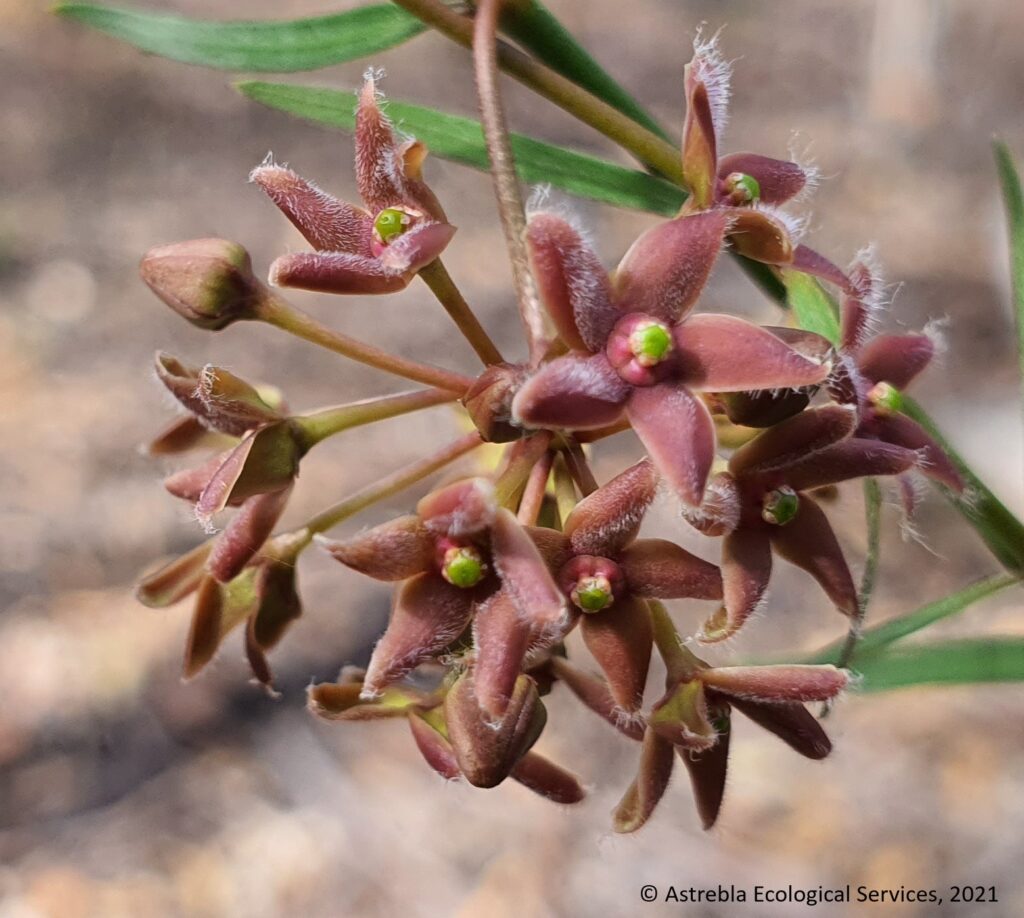
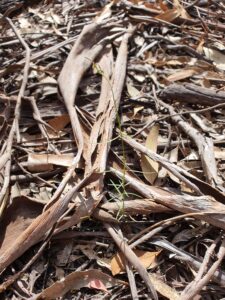
Habitat
Our surveys found V. forsteri in two main vegetation types, open forest dominated by Eucalyptus fibrosa subsp. nubilis with E. sideroxylon (RE 13.11.5) and open forest dominated by E. dealbata with E. crebra (RE 13.11.3). We also found a number growing on the mesh fences erected decades ago to control rabbits (but none on standard barbed wire fences). Some had even started to grow on the new so-called ‘cluster fences’ recently erected across the landscape in this district with massive funding from government. These fences prevent the widespread movement of macropods and other native mammals, and I predict they will have a massively detrimental impact on many least concern species in the area – but that is a topic for another blog!
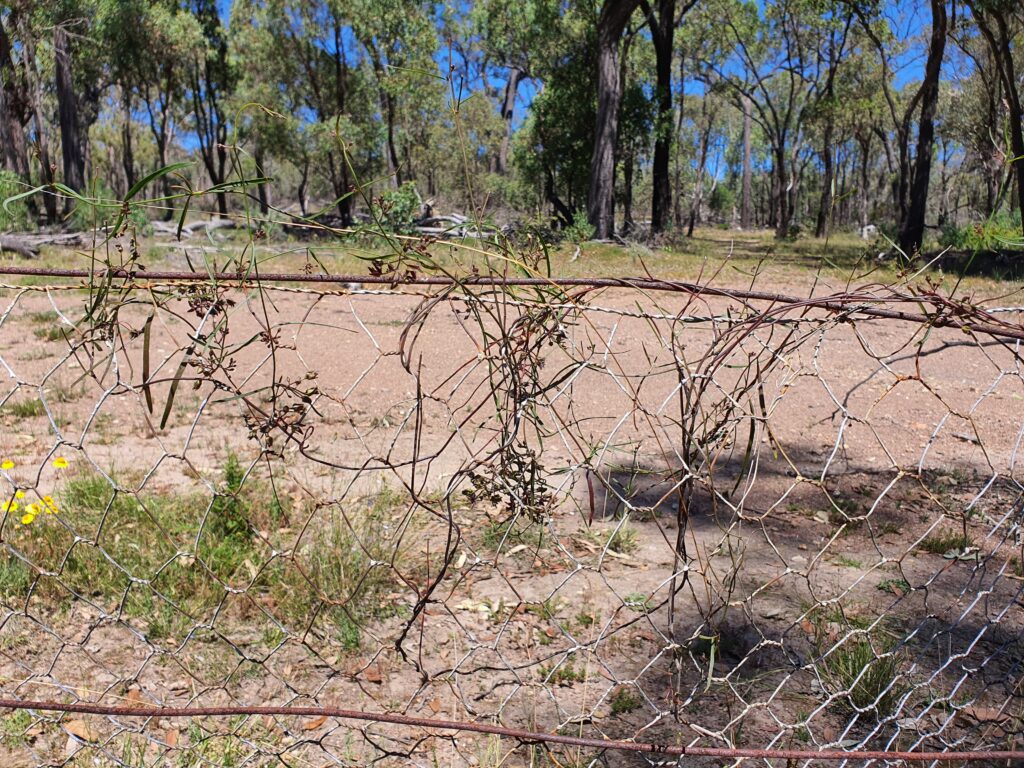
We found V. forsteri stems twining in the following situations:
- The most common species we found it twining on was Olearia canescens, usually dead but standing
- Vincetoxicum forsteri was also frequently found climbing coppicing E. fibrosa stems (see pic – many of the areas surveyed are the subject of private logging ventures),
- More uncommonly it was found climbing on Acacia leiocalyx or A. fimbriata shrubs, either alive or dead (but still standing).
In the survey area, these habitat types occur in a mosaic with open forest dominated almost exclusively by Corymbia citriodora (RE 13.11.6). We rarely found Vincetoxicum forsteri in association with C. citriodora – it appears to have a clear preference for habitat occupied by ironbarks, and E. dealbata.
We also found it along the verges of logging tracks.
Vincetoxicum forsteri has been previously associated in the main with dense shrubland (Forster et al., 2004). However, the open forest habitats in which we found these V. forsteri populations did not have dense shrub layers – in general, these open forests had very sparse to sparse shrub layers, with clear visibility for 50 m or more in most directions. We did not find any plants in the nearby areas characterised by a dense Olearia canescens shrub layer. This could be because the dense habitat makes it harder to detect, although overall 4 botanists walked just over 500 km of transects for this survey, of which at least 80 km was in areas with dense O. canescens – so these areas were well-surveyed.
Most individuals were found in areas where logging was active – although it is not known how populous the species was prior to logging, which is believed to have been practiced here for many decades.
It is interesting to note that in this area, V. forsteri is present with extensive populations of the vulnerable cycad Macrozamia conferta, another species whose populations we were mapping, and which co-occurs with forestry activities. This cycad is endemic to the Durikai-Talgai-Bringalily State Forest area, and this population is believed to be the largest on private land.
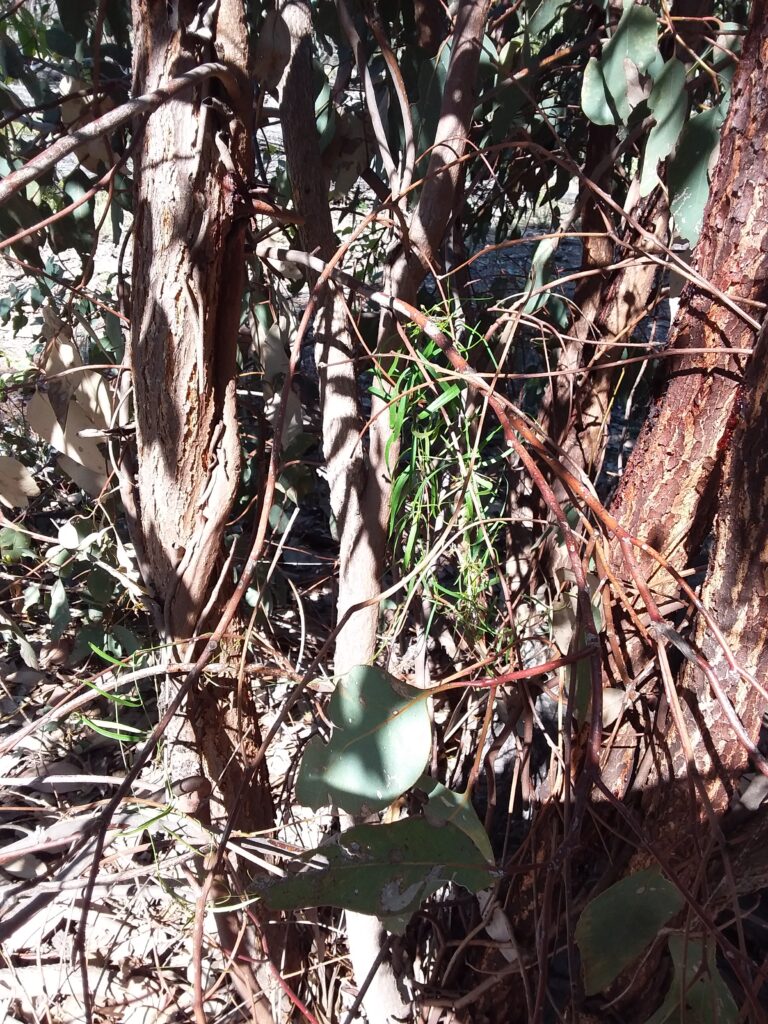

References
Forster, P.I., Binns, D. and Roberston, G., 2004, Rediscovery of Tylophora linearis P.I. Forster (Apocynaceae: Asclepiodoideae) from New South Wales, with revision of its conservation status to vulnerable. Austrobaileya 6 (4): 942-946.
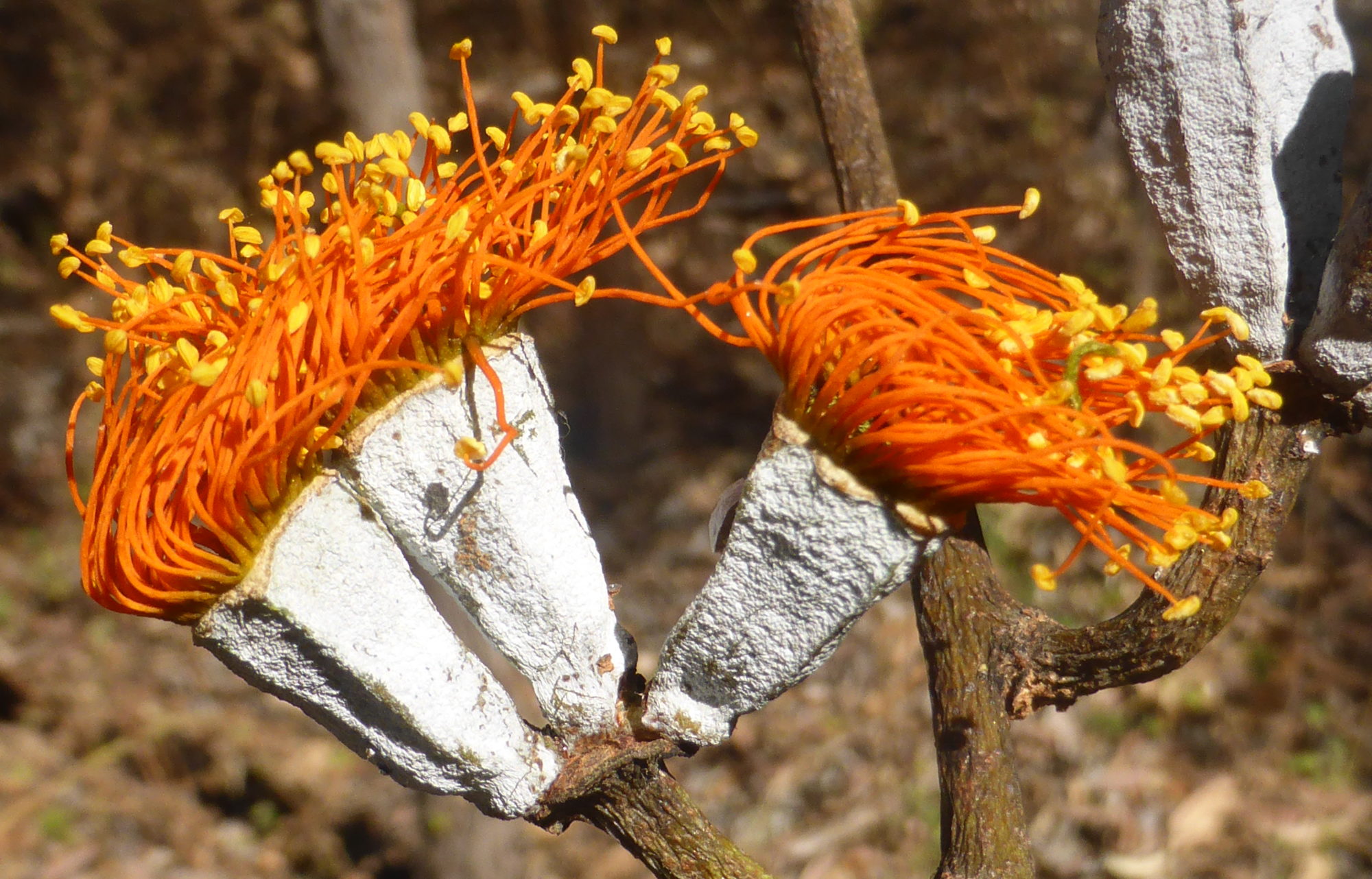
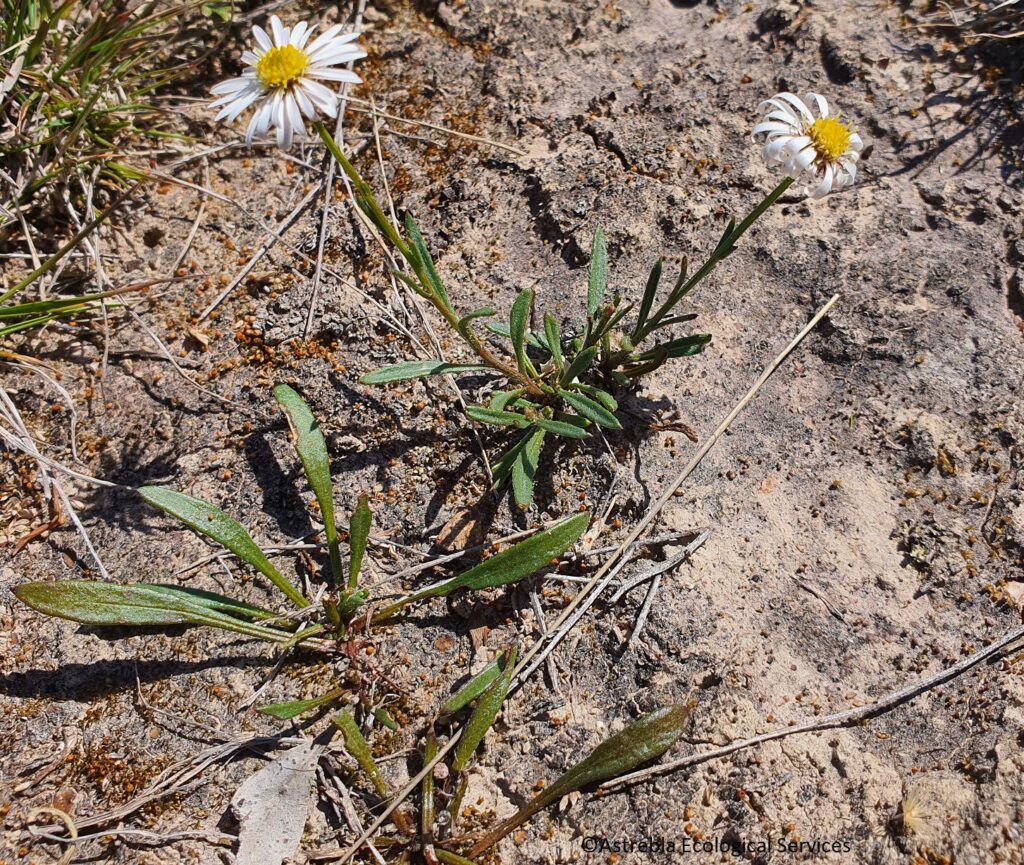
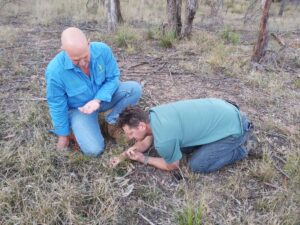

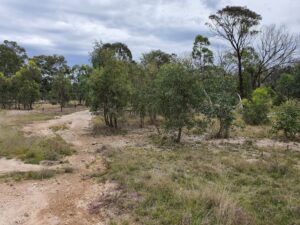


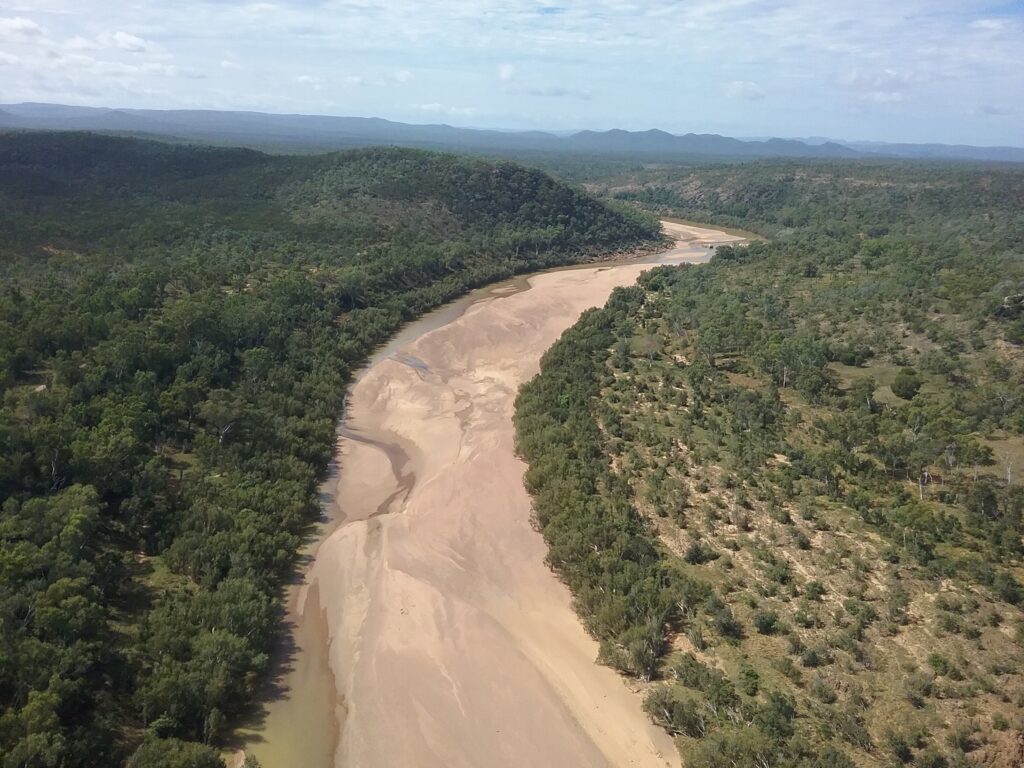

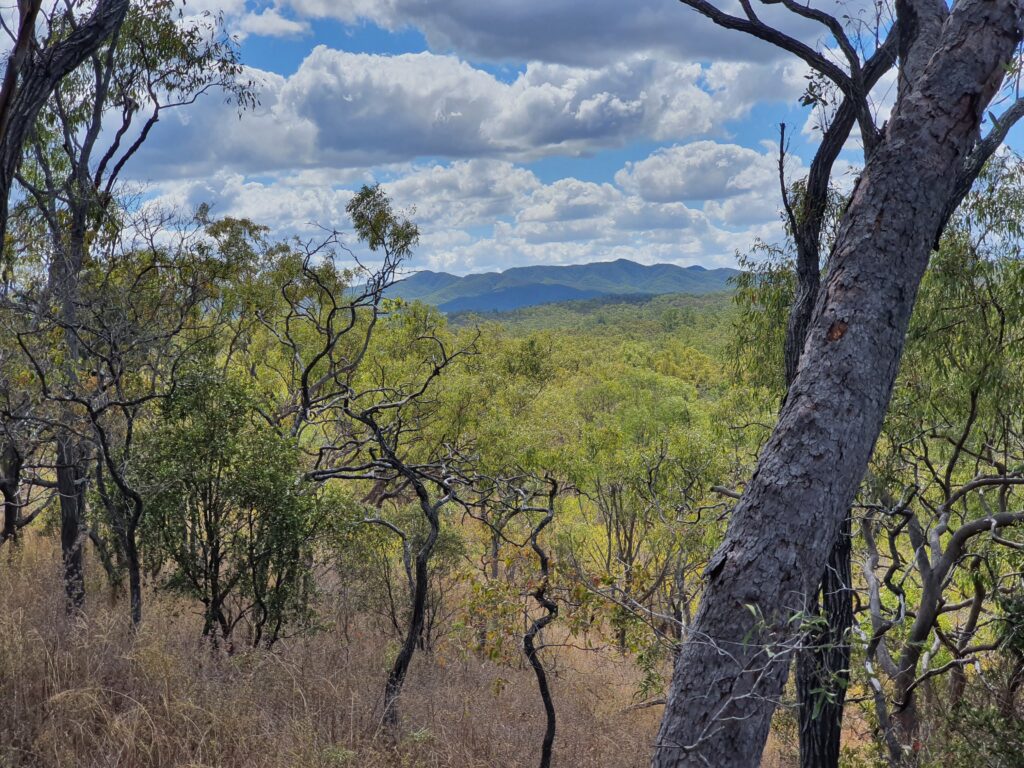
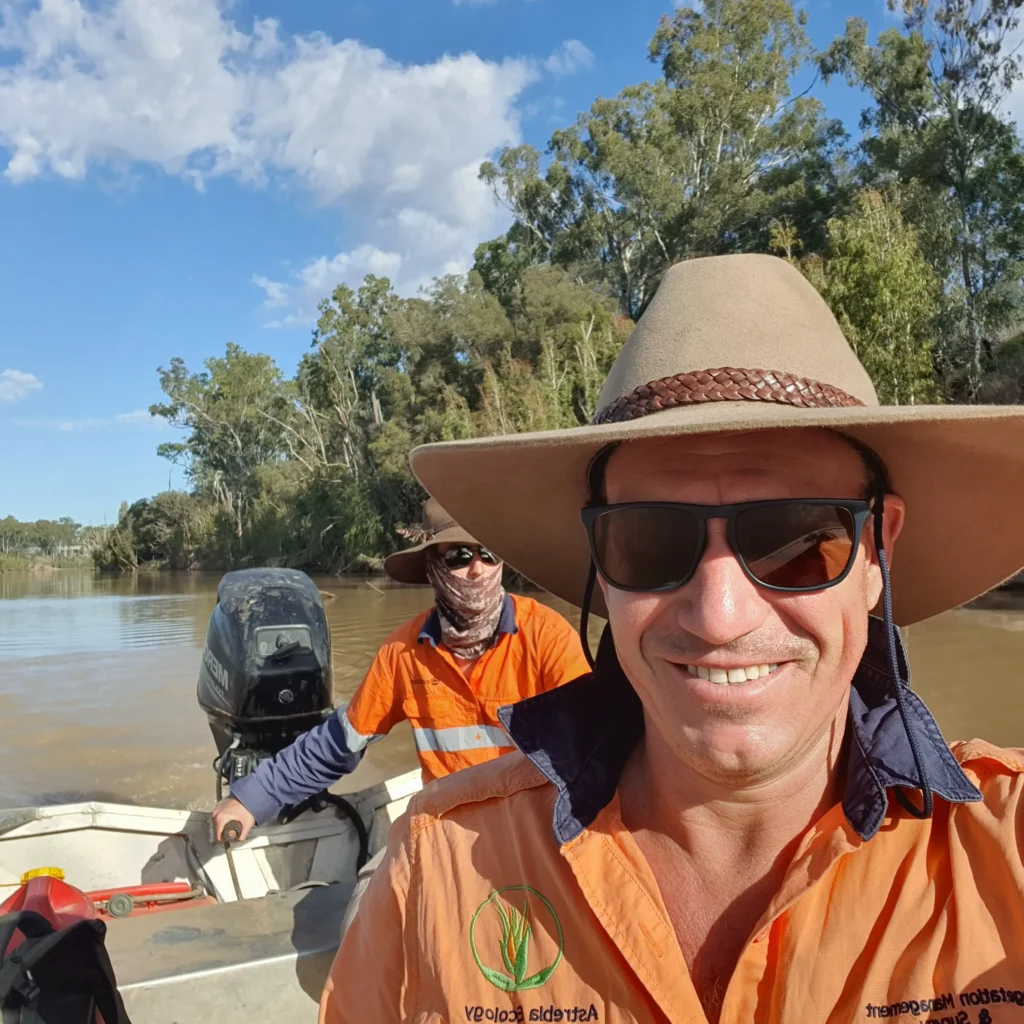
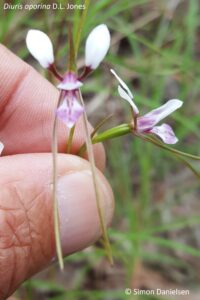
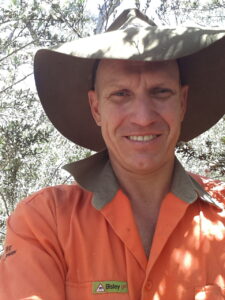 I have pre-approval as a suitably qualified person under the Flora Survey Guidelines and have conducted over 30 flora trigger map surveys since 2015. If you wish to discuss your flora trigger map survey requirements, please don’t hesitate to contact me on:
I have pre-approval as a suitably qualified person under the Flora Survey Guidelines and have conducted over 30 flora trigger map surveys since 2015. If you wish to discuss your flora trigger map survey requirements, please don’t hesitate to contact me on:
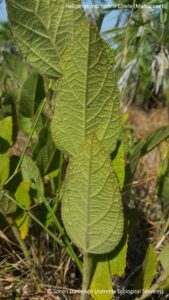


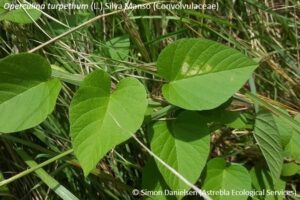
 We quickly located it, growing in the same grassland location as in 2000 (possibly from the same tuber). It was not flowering, however its presence in the same location as a previous confirmed record, and its conspicuously flanged/winged stems, suggested that is it highly likely to be O. turpethum.
We quickly located it, growing in the same grassland location as in 2000 (possibly from the same tuber). It was not flowering, however its presence in the same location as a previous confirmed record, and its conspicuously flanged/winged stems, suggested that is it highly likely to be O. turpethum. Typhonium praetermissum is a relatively cryptic perennial geophyte (i.e. a predominately subterranean herb) endemic to the Darwin/Litchfield area. It flowers and fruits in November and December, and appears to produce leaves only during the wet season, after which they quickly deteriorate and the plant disappears beneath the soil. The flowers are very delicate and exude an apparently unpleasant odour, but are quickly destroyed by ongoing wet season downpours, having a life of 1-3 days.
Typhonium praetermissum is a relatively cryptic perennial geophyte (i.e. a predominately subterranean herb) endemic to the Darwin/Litchfield area. It flowers and fruits in November and December, and appears to produce leaves only during the wet season, after which they quickly deteriorate and the plant disappears beneath the soil. The flowers are very delicate and exude an apparently unpleasant odour, but are quickly destroyed by ongoing wet season downpours, having a life of 1-3 days. There are some major difficulties in locating and accurately identifying Typhonium spp.. Flowers are generally required to key to species, however these are rarely encountered. In addition, most species have leaves that display extreme morphological variations (as can be seen in the accompanying photos), making even tentative ID difficult.
There are some major difficulties in locating and accurately identifying Typhonium spp.. Flowers are generally required to key to species, however these are rarely encountered. In addition, most species have leaves that display extreme morphological variations (as can be seen in the accompanying photos), making even tentative ID difficult. However, Dr Matthew Barrett of the WA Dept. of Biodiversity, Conservation and Attractions has developed a DNA barcoding technique that allows accurate and unambiguous identification to species of sterile material. Consequently, representative collections of leaf material were made from within the population of Typhonium individuals observed during our survey at Gunn Point and send to Dr Barrett for analysis and identification.
However, Dr Matthew Barrett of the WA Dept. of Biodiversity, Conservation and Attractions has developed a DNA barcoding technique that allows accurate and unambiguous identification to species of sterile material. Consequently, representative collections of leaf material were made from within the population of Typhonium individuals observed during our survey at Gunn Point and send to Dr Barrett for analysis and identification. As a result, the identification of the majority of the population observed to T. praetermissum was possible. In addition, a small number of T. johnsonianum were also confirmed present. Interestingly, of the many hundreds of individuals of both species observed during the surveys, only one individual had fruit – all of the remainder were sterile.
As a result, the identification of the majority of the population observed to T. praetermissum was possible. In addition, a small number of T. johnsonianum were also confirmed present. Interestingly, of the many hundreds of individuals of both species observed during the surveys, only one individual had fruit – all of the remainder were sterile.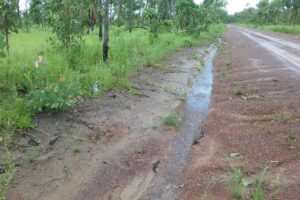 An interesting observation was that T. praetermissum was often present on disturbed surfaces, including spoon drains that are graded annually, and an old gravel pit.
An interesting observation was that T. praetermissum was often present on disturbed surfaces, including spoon drains that are graded annually, and an old gravel pit. In the photo to the left, Bob Harwood is pointing out a population of nearly 100 individuals we observed in a large gravel pit beside the main road.
In the photo to the left, Bob Harwood is pointing out a population of nearly 100 individuals we observed in a large gravel pit beside the main road. This species is very similar to T. praetermissum, but is less well known, being listed as data deficient in the NT. It has been recorded from the Alligator River floodplain, Kakadu National Park, and from the Humpty Doo and Noonamah areas. This survey represents the first collection from the Gunn Point area – as such, a range extension of approximately 30 km, which is relatively significant for a locally endemic plant with such a small range.
This species is very similar to T. praetermissum, but is less well known, being listed as data deficient in the NT. It has been recorded from the Alligator River floodplain, Kakadu National Park, and from the Humpty Doo and Noonamah areas. This survey represents the first collection from the Gunn Point area – as such, a range extension of approximately 30 km, which is relatively significant for a locally endemic plant with such a small range.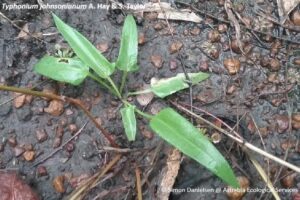 In general, T. johnsonianum displays less leaf-form variation than T. praetermissum – the leaves were invariably narrow triangular with a distinctive sagittate to hastate base, and a relatively short petiole. Some plants are more lanceolate, being cuneate to rounded at the base and lacking auricles.
In general, T. johnsonianum displays less leaf-form variation than T. praetermissum – the leaves were invariably narrow triangular with a distinctive sagittate to hastate base, and a relatively short petiole. Some plants are more lanceolate, being cuneate to rounded at the base and lacking auricles. I first became aware of these tiny ferns when they began popping up in my hanging plant pots! Soon I had a whole colony, and they transplanted well into tiny bonsai pots, although I had no idea what they were – there were only tiny, fairly non-descript leaves with blades about 10-15 mm long.
I first became aware of these tiny ferns when they began popping up in my hanging plant pots! Soon I had a whole colony, and they transplanted well into tiny bonsai pots, although I had no idea what they were – there were only tiny, fairly non-descript leaves with blades about 10-15 mm long.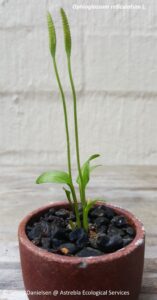 Those pictured here are Ophioglossum reticulatum L. (Ophioglossaceae), a tiny fern growing to 20 cm or so tall, and recorded from damp, shady situations among grass or on bare soil, often in eucalypt forest.
Those pictured here are Ophioglossum reticulatum L. (Ophioglossaceae), a tiny fern growing to 20 cm or so tall, and recorded from damp, shady situations among grass or on bare soil, often in eucalypt forest.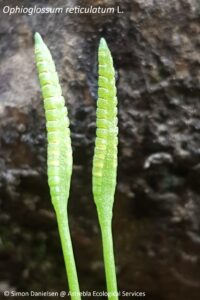 The fruiting spikes (actually modified leaves) are shown in this image – they are approximately 5 cm tall, and their presence mark the members of Ophioglossaceae as quite different from other ferns – they are referred to by taxonomists as either fern allies or fern ‘oddities’.
The fruiting spikes (actually modified leaves) are shown in this image – they are approximately 5 cm tall, and their presence mark the members of Ophioglossaceae as quite different from other ferns – they are referred to by taxonomists as either fern allies or fern ‘oddities’. I also recorded this species on a survey I conducted in 2018 on the Evelyn Tablelands, growing on basaltic soil in Eucalyptus tereticornis open forest.
I also recorded this species on a survey I conducted in 2018 on the Evelyn Tablelands, growing on basaltic soil in Eucalyptus tereticornis open forest.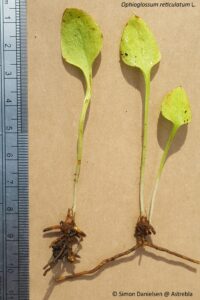 These tiny leaves were barely noticeable among the leaf litter, but were spotted by my eagle-eyed mate Dave Hunter, whose curiosity and ability to pick out tiny orchids and other cyrptophytes is fast becoming legendary!
These tiny leaves were barely noticeable among the leaf litter, but were spotted by my eagle-eyed mate Dave Hunter, whose curiosity and ability to pick out tiny orchids and other cyrptophytes is fast becoming legendary!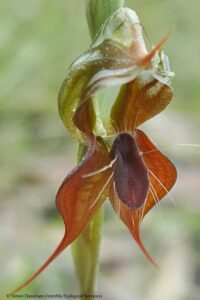
 Listed as endangered in Queensland and under the EPBC Act, this species is a rare slender twining vine distinguished by its small lanceolate, herbaceous, opposite leaves with purplish-red petioles and clear sap
Listed as endangered in Queensland and under the EPBC Act, this species is a rare slender twining vine distinguished by its small lanceolate, herbaceous, opposite leaves with purplish-red petioles and clear sap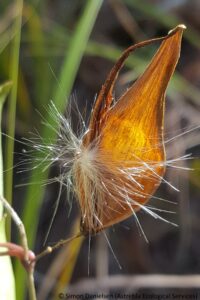 Tylophora rupicola was recorded from low closed and open forests, mostly grassy, on rhyolite slopes in association with Lophostemon confertus, Acacia aulococarpa, Eucalyptus granitica, Corymbia abergiana, E. reducta, Allocasuarina littorlis, Syncarpia glomulifera and C. citriodora, always slightly upslope of rocky minor watercourses (regional ecosystems 7.12.30d and 7.12.66c).
Tylophora rupicola was recorded from low closed and open forests, mostly grassy, on rhyolite slopes in association with Lophostemon confertus, Acacia aulococarpa, Eucalyptus granitica, Corymbia abergiana, E. reducta, Allocasuarina littorlis, Syncarpia glomulifera and C. citriodora, always slightly upslope of rocky minor watercourses (regional ecosystems 7.12.30d and 7.12.66c). Dendrobium fellowsii F. Muell. (Orchidaceae) (native damsel orchid)
Dendrobium fellowsii F. Muell. (Orchidaceae) (native damsel orchid)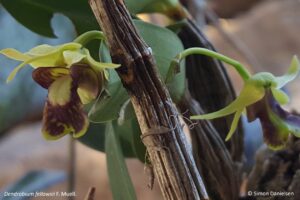 Dallachy collected it in the 1860s from the Cardwell area, and it was described by Baron Ferdinand von Mueller in 1870. Mueller named it after Thomas Howard Fellows, a short-termed Attorney General of colonial Victoria and later a Supreme Court judge. Dendrobium fellowsii is also known as Eleutheroglossum fellowsii (F. Muell.) M.A. Clem. & D.L. Jones.
Dallachy collected it in the 1860s from the Cardwell area, and it was described by Baron Ferdinand von Mueller in 1870. Mueller named it after Thomas Howard Fellows, a short-termed Attorney General of colonial Victoria and later a Supreme Court judge. Dendrobium fellowsii is also known as Eleutheroglossum fellowsii (F. Muell.) M.A. Clem. & D.L. Jones. Cajanus mareebensis (S.T. Reynolds & Pedley) Maesen (Fabaceae)
Cajanus mareebensis (S.T. Reynolds & Pedley) Maesen (Fabaceae)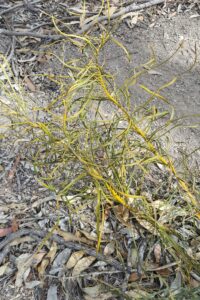 Macrozamia conferta (D.L. Jones & P.I. Forster)
Macrozamia conferta (D.L. Jones & P.I. Forster)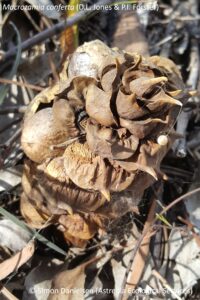
 Diuris oporina D.L. Jones (Orchidaceae)
Diuris oporina D.L. Jones (Orchidaceae) Cycas armstrongii Miq. (Cycadaceae)
Cycas armstrongii Miq. (Cycadaceae)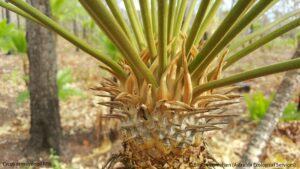 This cycad is relatively easily identified as it has flat to recurved (not revolute) leaflet margins, ovoid-globose pollen (male) cones and densely orange tomentose, pungent cataphylls (illustrated in the lower image – cataphylls are the young leaves). The mature adult leaf blades are green and shiny.
This cycad is relatively easily identified as it has flat to recurved (not revolute) leaflet margins, ovoid-globose pollen (male) cones and densely orange tomentose, pungent cataphylls (illustrated in the lower image – cataphylls are the young leaves). The mature adult leaf blades are green and shiny.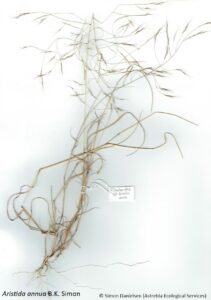 Aristida annua B.K. Simon (Poaceae)
Aristida annua B.K. Simon (Poaceae) Homoranthus porteri (C.T. White) Craven & S.R. Jones (Myrtaceae)
Homoranthus porteri (C.T. White) Craven & S.R. Jones (Myrtaceae)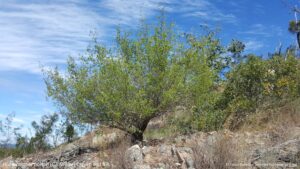 Homoranthus porteri is restricted to upland areas of rock pavement in ranges along the western fringe of the Atherton Tableland, with outlying populations at Mt Windsor (inland from the Daintree River), Mt Mulligan and the Hann Tableland.
Homoranthus porteri is restricted to upland areas of rock pavement in ranges along the western fringe of the Atherton Tableland, with outlying populations at Mt Windsor (inland from the Daintree River), Mt Mulligan and the Hann Tableland.